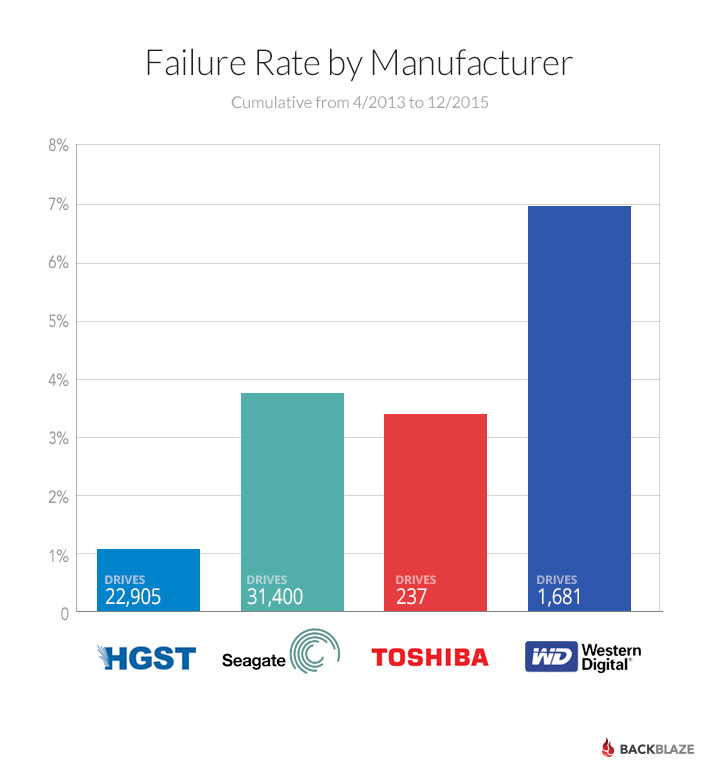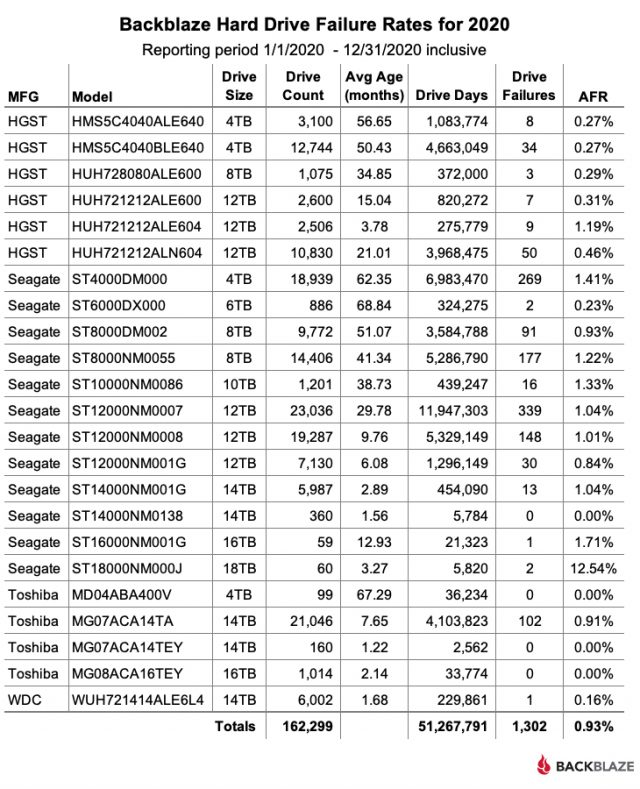

There were no out of the box failures which is a good start, but that’s all you can say. The 18TB Seagate model (ST18000NM000J) has 300 drive days and they’ve been in service for about 12 days.That’s great, but when we dig in a little we get different stories for each of the drives. There are several models with zero drive failures in the quarter. The table below covers what happened in Q3 2020. This leaves us with 150,757 hard drives in our review. For our evaluation we remove from consideration those drive models for which we did not have at least 60 drives (more on that later). Quarterly Hard Drive Failure Stats for Q3 2020Īt the end of Q3 2020, Backblaze was using 150,974 hard drives to store customer data. As always, we look forward to your comments. This review looks at the Q3 2020 and lifetime hard drive failure rates of the data drive models currently in operation in our data centers and provides a handful of insights and observations along the way. Of that number, there were 2,780 boot drives and 150,947 data drives. Reliability and affordability ensure HDDs will be around for the foreseeable future.As of September 30, 2020, Backblaze had 153,727 spinning hard drives in our cloud storage ecosystem spread across four data centers. Last year Micron released a 15TB SSD at the princely cost of $2,770. SSDs are growing in use, but they still cannot match a hard disk for affordable capacity. Budman says they are not phasing out Toshiba its gear has simply been available in more limited quantities in the past. Looking ahead, Backblaze will be adding 16TB drives from Toshiba to test, so despite Toshiba’s modest presence in the most recent report, it is not going away. And while the chart shows Seagate drives had a higher failure rate than HGST drives, we’re talking about less than 1% failure. On a device basis, the highest failure percentage was the Seagate 12TB at 1.41%, which equates to just 29 failures out of 10,876 drives.Īnecdotally, I’ve seen more complaints on hobbyist and home builder boards about Seagate drives than any other brand and had more than a few Seagates brick on me as well. “Statistically, some drives are just more reliable – at least we see them in our use case – but all the drives are quite impressive,” he says. Seagate, with 93,398 deployed and 292 drive deaths, had a failure rate of 0.31%. Out of 29,047 HGST drives deployed, just 27 died, for a failure rate of 0.09%. Looking at specific vendors, HGST (which is owned by Western Digital) was the most reliable brand. The fact that inside a single hard drive there could be 8 platters spinning at a rate of 60 times per second, each with a head so close to the platter that a fingerprint could cause it to crash, and regularly reading and writing data for an entire year with a mere 1% failure rate is nothing short of science fiction,” Backblaze CEO Gleb Budman told me via email.Īcross the board, the Backblaze-measured AFR is insanely low. “Hard drives are amazing pieces of technology produced on a large scale that can reliably store and retrieve a gigabyte of data for about $0.02. Drive days represents the number of days the drives were operational during the period of observation, and Backblaze uses 366 because this year is a leap year.Īs the chart shows, the AFR for Q1 2020 was 1.07%, which is the lowest AFR for any quarter since Backblaze started keeping track of failures in 2013 (and back then it had much fewer drives).

The company tracks the number of drives and failures from vendors and various capacities to come up with an estimated annualized failure rate (AFR), which is based on the equation (drive failures/drives days/366) * 100. The workload is typically steady but not intense.

That last stage is how they operate for most of their lives, with some drives being busier than others. As files are deleted, the space is used to write more files. Once the drives are full, most of the activity is reading and some file deletions. Hard drives go through a specific lifecycle when they’re put into service at Backblaze. Initially, data is written to the drives until they’re almost full. With that many drives deployed, Backblaze has a unique perspective on the durability of different hard drives. Cloud storage provider Backblaze’s quarterly drive performance report shows that hard disks have remarkable resilience despite the abuse they take.īackblaze has storage pods in data center colocations that include more than 129,000 HDDs from various manufacturers, ranging in capacity from 4TB to 16TB. But if they do, it won’t be any time soon. Given the continued growth in capacity and performance of enterprise SSDs, it would seem mechanical hard disk drives are set to fade out eventually.


 0 kommentar(er)
0 kommentar(er)
